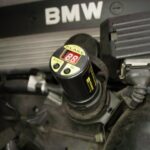The term “OBD2” or On-Board Diagnostics might sound familiar if you’ve been researching car repairs or vehicle maintenance. This system plays a crucial role in modern vehicles, providing valuable insights into their performance and health. But what exactly is the OBD2 connector, and why is it so important? This article will provide a comprehensive overview of OBD2, its history, and its significance in the automotive world.
What is On-Board Diagnostics (OBD)?
On-Board Diagnostics (OBD) refers to a vehicle’s self-diagnostic and reporting capability. It allows technicians to access information from various subsystems, monitor performance, and diagnose necessary repairs. The system generates data through Electronic Control Units (ECUs), essentially the vehicle’s computer system, which is then accessed through the OBD2 connector.
The Importance of OBD2
OBD2 is essential for telematics and fleet management, enabling the monitoring and management of vehicle health and driver behavior. It allows fleet managers to:
- Track Wear and Tear: Identify vehicle parts experiencing faster wear.
- Proactive Diagnostics: Detect potential issues before they become major problems.
- Monitor Driver Behavior: Measure driving habits, speed, idling time, and more. This information contributes to improved safety, efficiency, and maintenance planning.
Locating the OBD2 Port
The OBD2 port is typically located under the dashboard on the driver’s side. In most passenger vehicles, you’ll find it within reach below the steering wheel column. The connector itself can have a 16-pin, 6-pin, or 9-pin configuration depending on the vehicle’s make and model.
OBD vs. OBD2: Key Differences
OBD2 is the second generation of On-Board Diagnostics. While the original OBD systems were often externally connected to the car’s console, OBD2 is integrated into the vehicle itself. This integration provides a more standardized and accessible system for diagnostics.
The Evolution of OBD2: A Historical Overview
The history of On-Board Diagnostics dates back to the 1960s, with contributions from various organizations like the California Air Resources Board (CARB) and the Society of Automotive Engineers (SAE). Before standardization, manufacturers used proprietary systems, leading to compatibility issues. Key milestones include:
- 1968: Volkswagen introduced the first computer-based OBD system.
- 1991: California mandated basic on-board diagnostics (OBD I) for all vehicles.
- 1996: OBD2 became mandatory for all cars manufactured in the United States.
- 2001/2003: The European version (EOBD) became mandatory for gasoline and diesel vehicles in the European Union.
Data Accessible via OBD2
OBD2 provides access to status information and Diagnostic Trouble Codes (DTCs) for:
- Powertrain: Engine and transmission systems.
- Emission Control Systems: Monitoring components related to emissions.
Additional data accessible via OBD2 includes:
- Vehicle Identification Number (VIN)
- Calibration IDs
- Ignition Counter
- Emission System Counters
When a mechanic connects a scan tool to the OBD2 port, they can read these codes to pinpoint issues, enabling efficient repairs and preventing major breakdowns. Examples of DTCs include:
- P0201: Injector Circuit Malfunction – Cylinder 1
- P0217: Engine Overheat Condition
- C0128: Low Brake Fluid Circuit
OBD2 and Telematics
OBD2 allows telematics devices to collect data like engine RPM, vehicle speed, fault codes, and fuel consumption. This data can then be used to monitor vehicle usage, driver behavior, and optimize fleet operations.
WWH-OBD: The Future of Diagnostics
World Wide Harmonized OBD (WWH-OBD) is an international standard for vehicle diagnostics. It expands upon OBD2, providing more detailed data and enabling access to a wider range of information. Advantages of WWH-OBD include:
- Access to More Data Types: Expanding beyond the 255 data types available in OBD2.
- More Detailed Fault Information: Providing specific fault modes and severity levels for improved diagnostics.
Conclusion
The OBD2 connector is a critical component in modern vehicles, providing a gateway to valuable diagnostic information. Its role in vehicle maintenance, fleet management, and emissions monitoring is undeniable. As technology continues to evolve, the OBD2 interface will likely remain a crucial element in the automotive landscape. With its ability to provide real-time insights into vehicle performance and health, the OBD2 connector empowers car owners and professionals alike to maintain and optimize vehicle operation.

